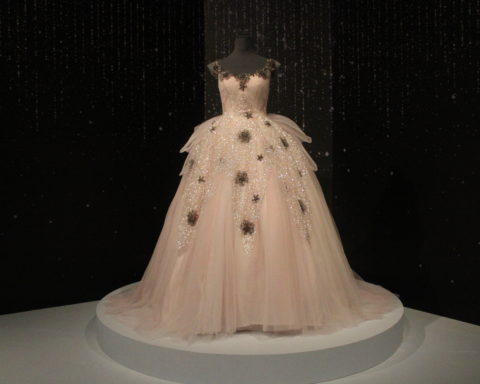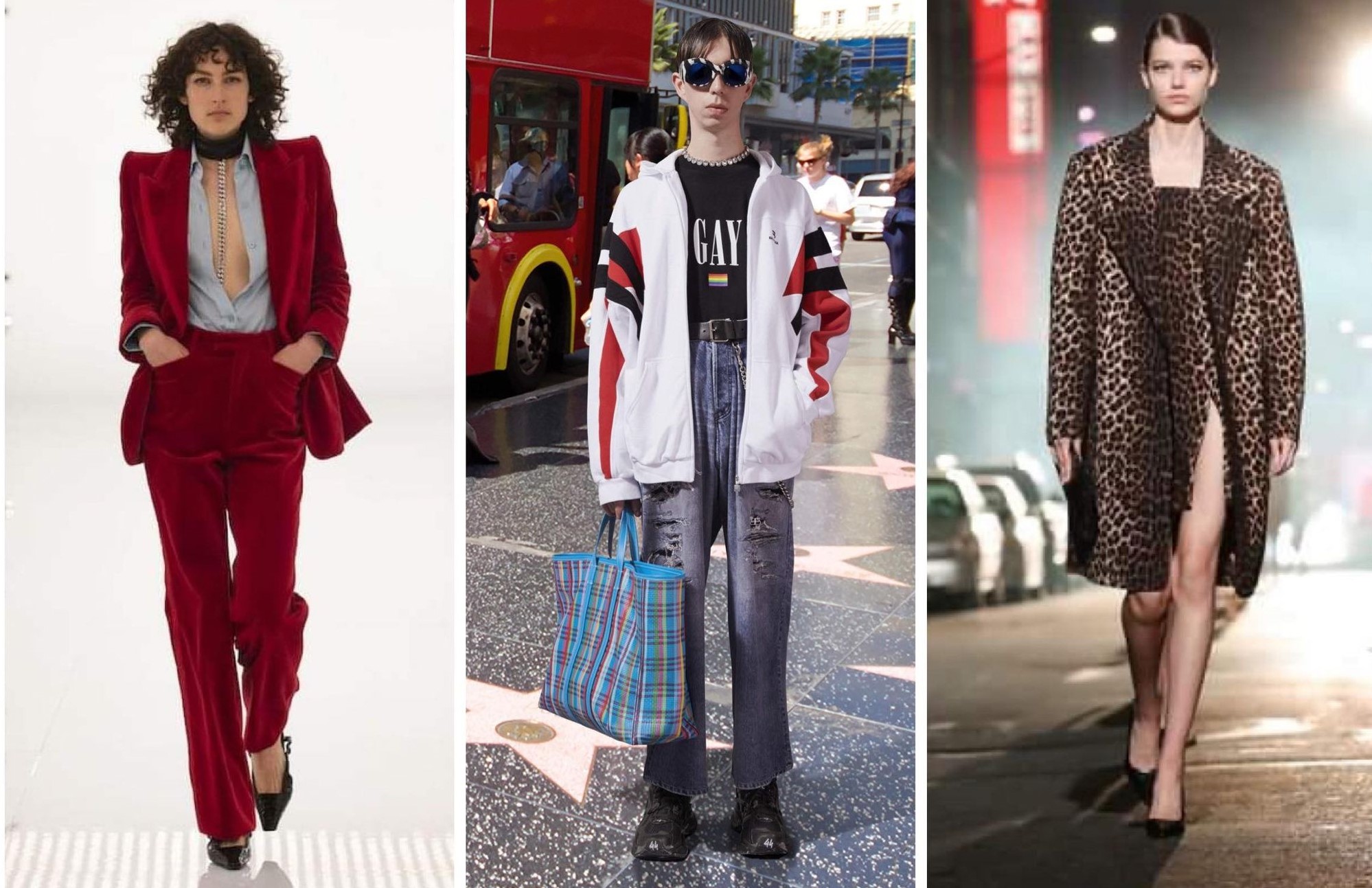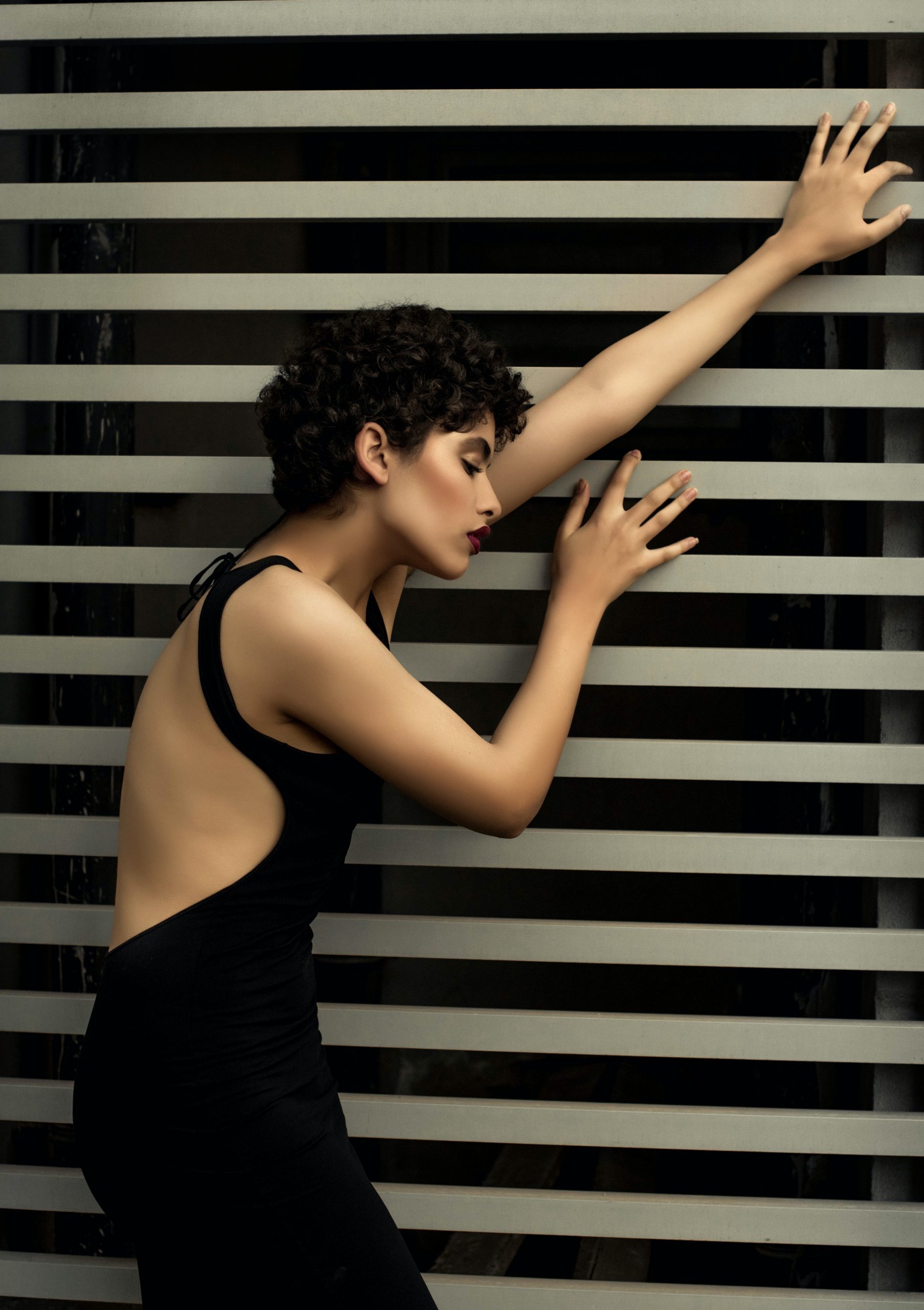
Following up with our previous article, we will be spotlighting African-American designers that have had an impact on the fashion industry. In this particular article, we’re taking a look at 12 designers that really should have gotten their due long ago. To use a somewhat overused phrase, there’s no time like the present:

Arthur McGee
Arthur McGee was born in Detroit, MI in 1933. He attended the Traphagen School of Design after winning a scholarship from a contest. After graduating from Traphagen, he briefly attended the Fashion Institute of Technology before leaving the school; he was told by the college that there were no jobs available for black designers.
McGee proved them wrong. The very next year – 1957 – he became the first African-American to run a design room (he worked for Bobbie Brooks, Inc) on Seventh Avenue. He designed costumes for Broadway shows, ran his first shop on St. Marks Place in New York in the 1960s, and had his designs sold at large luxury department stores. Those included Bergdorf Goodman, Saks Fifth Avenue, Lord & Taylor, Bloomingdale’s, and Henri Bendel. He mentored many younger designers – Stephen Burrows and Willi Smith being two of them – and had many celebrity clients.

Patrick Kelly
Patrick Kelly was born in Vicksburg, MS in 1954. He attended Jackson State University briefly before moving to Atlanta. He worked as an unpaid window dresser in an Yves Saint Laurent boutique there before moving to NYC to attend Parsons School of Design. He couldn’t afford to continue, so he left and remained in New York to try to make his career. He wasn’t accepted into the fashion fold in the city, so he did what it seems that many African-American creatives have done: he went to Paris (at the suggestion of his friend, model Pat Cleveland).
He began to see success in the City of Lights after a while. With his first line of dresses sold to Victoire and a feature in French Elle, he was on his way to being an industry star. In 1988, he became the first American accepted into the Chambre Syndicale du Prêt-à-Porter – a groundbreaking accomplishment. His clothing was famous for confronting racial stereotypes in a way that most were either unwilling or unable to do. His life was cut short in 1990 when he passed away from AIDS-related complications. We encourage you to do your research on his work; there’s so much more to know.

Ann Lowe
Ann Lowe was born in 1898 in Clayton, AL into a lineage of seamstresses. She was married in 1912, a marriage that ended because her then-husband wanted her to leave her career behind. Instead, she took an opportunity to move with her son to Florida to design a wedding dress. She later moved to New York City to attend the S.T. Taylor Design School, from which she graduated in 1919 and moved back to Florida.
While her dress salon catering to wealthy clients was a quick success, she wanted to move back to New York. After arriving back in 1928, she began working on commission for stores like Saks Fifth Avenue and Neiman Marcus. She went on to design for many high-society figures like the Rockefellers, Du Ponts, Posts, and Auchinclosses – for whom she designed the wedding dress of future First Lady Jacqueline Kennedy for her wedding to then-Senator John F. Kennedy. Her work was on par with couturiers of the day such as Christian Dior.

Willi Smith
Willi Smith was born in Philadelphia, PA in 1948 to an ironworker father and a homemaker mother. He attended the Philadelphia College of Art before heading to New York to attend the Parsons School of Design while interning for designer Arnold Scassi. He left Parsons in 1967 to begin his design career.
Smith was very well-known for his interdisciplinary approach to designing clothing in a time when the fashion industry was not known to operate in that manner. He worked with many different groups of creatives such as performers, artists, architects, composers, graphic designers, and technologists in order to come up with his collections. His goal was to design for everyday people because he believed that everyone deserved to be able to take part in avant-garde designs without spending large amounts of money to do it. His career saw him winning multiple design awards, bringing in over $25 million in yearly sales, and being widely seen as the most successful African-American designer of his time.

Jay Jaxon
Jay Jaxon was born in 1941 in Queens, New York. After attending FIT, he left New York for Paris in 1968 – a monumentally historic year in cultural and political terms. His career began a few months before the assassination of Dr. Martin Luther King and the student protests in Paris. While there, he trained under designers Christian Dior and Yves Saint Laurent. He was the first American to head up a Parisian couture house, doing so for Jean-Louis Scherrer.
He returned to New York in the 1970s to resume creating his own designs. Luxury department stores such as Henri Bendel, Bonwit Teller, and Lord & Taylor sold pieces from his collection. Eventually, he moved to California to create costumes for theatrical shows as well as television productions and film. His career was pioneering in many ways, and he deserves to be remembered.

Mildred Blount
Mildred Blount was born in 1907 in North Carolina. Her hat designs were recognized at the New York World Fair in 1939, for which she created a host of miniature hats. This led to her having the opportunity to design hats for Hollywood film productions such as Gone With The Wind and Easter Parade. During this time, she became the first African-American member of the Motion Pictures Costumers Union.
She opened her own shop in Beverly Hills, CA in the 1940s, and she began to be known as the milliner to Hollywood’s elite. She worked until her death in 1974. Her work is currently kept at the Los Angeles County Museum of Art and the California African American Museum.

Elizabeth Hobbs Keckley
Elizabeth Hobbs Keckley was born in 1818 in Virginia. She is a former slave that bought her freedom from her St. Louis owners through seamstress work. Her new life began in Washington D.C, where she began creating dresses at her 12th Street business with the help of her 20 seamstresses. Her business thrived by making dresses for members of D.C.’s high society – the Lees, the Davises, and (eventually) Mary Todd Lincoln.
After President Lincoln’s inauguration, his wife hired Keckley to be her personal dressmaker. Their relationship grew into a deep friendship during the Lincolns’ time in the White House. Post-White House, Keckley earned a living dressmaking until about 1890. A couple of years later, she took a position as head of the Department of Sewing and Domestic Science Arts at Wilberforce University in Ohio. Her story is an extraordinary show of strength and perseverance.

Scott Barrie
Scott Barrie was born in Philadelphia, PA in 1946. His love of sewing began at the age of 10, when he’d work with his grandmother’s sewing machine. He studied at the Philadelphia College of Art before heading to New York to study at the Mayer School of Fashion. After graduating in 1965, he began working different jobs on Seventh Avenue while creating his own dresses at home. Henri Bendel and Bloomingdale’s both purchased some of his dresses; with this success, he opened up his first showroom.
When designing his collections, his designs were known for mastering draping techniques using both jersey and chiffon. He stopped designing under his own name in the early 1980s and made the move to Italy in 1982 to work for the Italian company Krizia – and then the Japanese company Kinshido.

Ola Hudson
Ola Hudson was born in 1946 in Los Angeles, CA. She studied dance in her earlier years in Switzerland, France, and London before marrying husband Anthony Hudson, with whom she had two sons – Albion and Saul (of Guns and Roses fame). She created designs for a number of musicians such as Iggy Pop, Diana Ross, David Bowie, and John Lennon, among others.
Additionally, she designed collections for Henri Bendel, Right Bank Clothing in Beverly Hills, Neiman Marcus, and Maxfield Blu in Los Angeles. She also had a shop on the Sunset Strip called Skitzo. Along with her photography and poetic talents, she was a real creative powerhouse.

Art Smith
Art Smith was born in Cuba to Jamaican parents in 1917. The family moved to Brooklyn when he was three years old. He was able to get a scholarship to attend Cooper Union for the Advancement of Science and Art. As he was one of the only black students there, the school attempted to move him toward becoming an architecture major due to a more likely outcome of securing work. He didn’t take that path; he ended up majoring in sculpture. This ended up being a fortuitous move for his future career.
Art became a coveted jewelry designer in Greenwich Village. During the time that his shop was in operation (1946-1979), he built up a big-name clientele. He designed work for clients such as Eleanor Roosevelt, Duke Ellington, and Lena Horne. His work was featured in Vogue, Harper’s Bazaar, and the New Yorker. After his death in 1982, there were no less than three exhibitions held that were devoted to his work.

Zelda Wynn Valdes
Zelda Wynn Valdes was born in 1905 in Chambersburg, PA. She moved with her family to White Plains, NY in the 1920s and began working in her uncle’s tailoring business before accepting a job as a stockroom worker in a local boutique. She opened her own boutique in 1948 in New York at Broadway and 158th St. in Harlem, becoming the first African-American to have a store on the street.
Many of her designs were worn by Hollywood stars, socialites and the wives of famous Black men. Some of those women were:
- Josephine Baker
- Marlene Dietrich
- Eartha Kitt
- Dorothy Dandridge
- Marian Anderson
- Mae West
- Ella Fitzgerald
- and many more!
She eventually moved her shop to West 57th St, where she continued to flourish. In her later years, she pivoted into costume design and began to tour with the Dance Theater of Harlem – which she did for more than two decades. She did a lot to enhance the position of African-American women that followed her path into the fashion industry.

Stephen Burrows
Stephen Burrows was born in 1943 in Newark, NJ. He studied at the Philadelphia College of Art before transferring to FIT in New York City. After graduating in 1966, he took a job at a blouse manufacturer before co-founding the O Boutique at 19th St and Park Ave. South. The boutique did well, bringing in the cool kids of the New York creative scene.
The following year, he launched a collection for Bonwit Teller. And then, a year after that (1970), his shop at Henri Bendel – Stephen Burrows World – opened; his star was officially on the rise. He became the first African-American fashion designer to gain international fame in 1973, when he was invited to participate in the iconic fashion faceoff between French and American designers – the Battle of Versailles. The Americans were widely seen as having won, and Burrows was a large reason why.
He has won multiple awards for his work throughout his career: three Coty American Fashion Critics’ Awards (1973, 1974, 1977), a Council of American Fashion Critics award (1975), a Knitted Textile Association Crystal Ball award (1975), a star on the Fashion Walk of Fame (received in 2002), and a CFDA Board of Directors Special Tribute Award (2006). Additionally, he received Lifetime Achievement Awards in 2014 from the Savannah College of Art and Design and the Pratt Institute. His career is still going; he’s the definition of longevity.
Hopefully we were able to teach you a bit about these amazing designers that you didn’t know before you saw our article. The fashion industry has so far to go in promoting its African-American voices to the same extent that it elevates those of their white counterparts. Ideally, we’ll get to a point where designers in our industry can all be respected and revered – regardless of the color of their skin.
To subscribe to Manic Metallic‘s Substack newsletter, click here. To follow us on Bluesky, click here.




